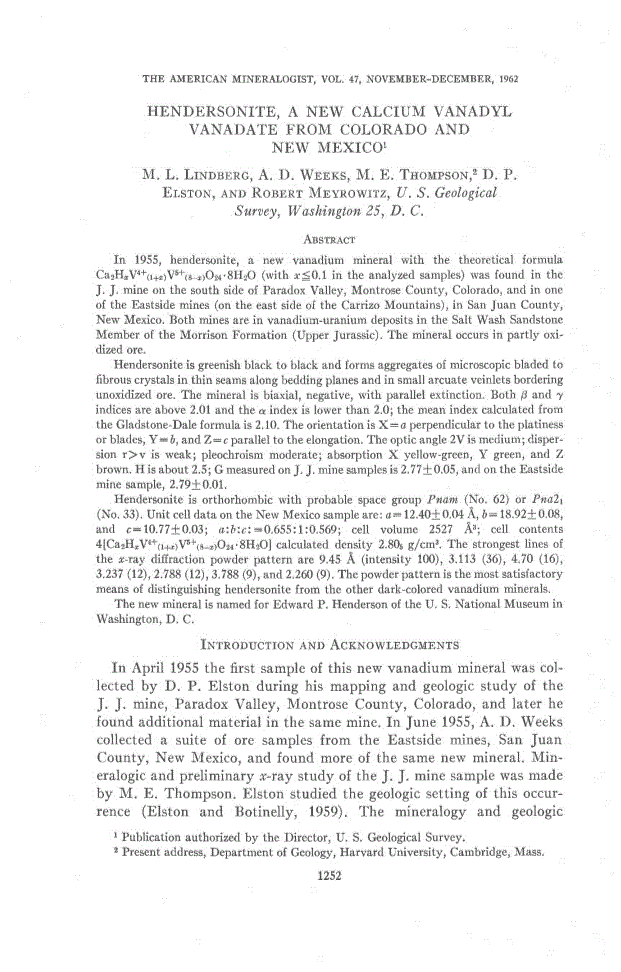Abstract
In 1955, hendersonite, a new vanadium mineral with the theoretical formula Ca2HxV4+(1+x)V5+(8-x)O24·8H2O (with in the analyzed samples) was found in the J. J. mine on the south side of Paradox Valley, Montrose County, Colorado, and in one of the Eastside mines (on the east side of the Carrizo Mountains), in San Juan County, New Mexico. Both mines are in vanadium-uranium deposits in the Salt Wash Sandstone Member of the Morrison Formation (Upper Jurassic). The mineral occurs in partly oxidized ore.
Hendersonite is greenish black to black and forms aggregates of microscopic bladed to fibrous crystals in thin seams along bedding planes and in small arcuate veinlets bordering unoxidized ore. The mineral is biaxial, negative, with parallel extinction. Both ² and ³ indices are above 2.01 and the ± index is lower than 2.0; the mean index calculated from the Gladstone-Dale formula is 2.10. The orientation is X=a perpendicular to the platiness or blades, Y= b, and Z=c parallel to the elongation. The optic angle 2V is medium; dispersion r>v is weak; pleochroism moderate; absorption X yellow-green, Y green, and Z brown. H is about 2.5; G measured on J. J. mine samples is 2.77±0.05, and on the Eastside mine sample, 2.79±0.01.
Hendersonite is orthorhombic with probable space group Pnam (No. 62) or Pna21 (No. 33). Unit cell data on the New Mexico sample are: a= 12.40± 0.04 Å, b= 18.92± 0.08, and c= 10.77±0.03; a:b:c: =0.655:1:0.569; cell volume 2527 Å3; cell contents 4[Ca2HxV4+(1+x)V5+(8-x)O24·8H2O] calculated density 2.805 g/cm3. The strongest lines of the x-ray diffraction powder pattern are 9.45 Å (intensity 100), 3.113 (36), 4.70 (16), 3.237 (12), 2.788 (12), 3.788 (9), and 2.260 (9). The powder pattern is the most satisfactory means of distinguishing hendersonite from the other dark-colored vanadium minerals.
The new mineral is named for Edward P. Henderson of the U. S. National Museum in Washington, D. C.





